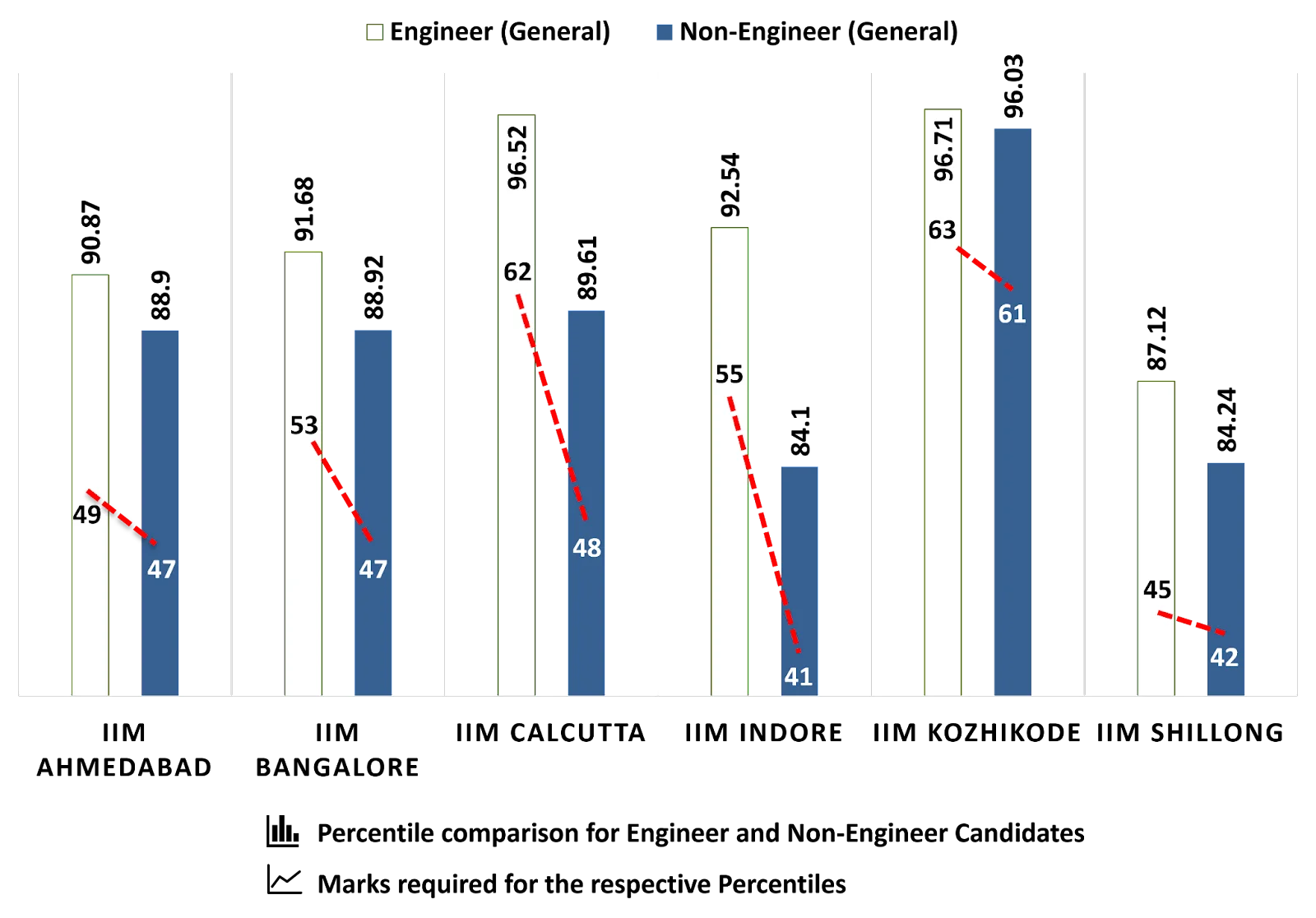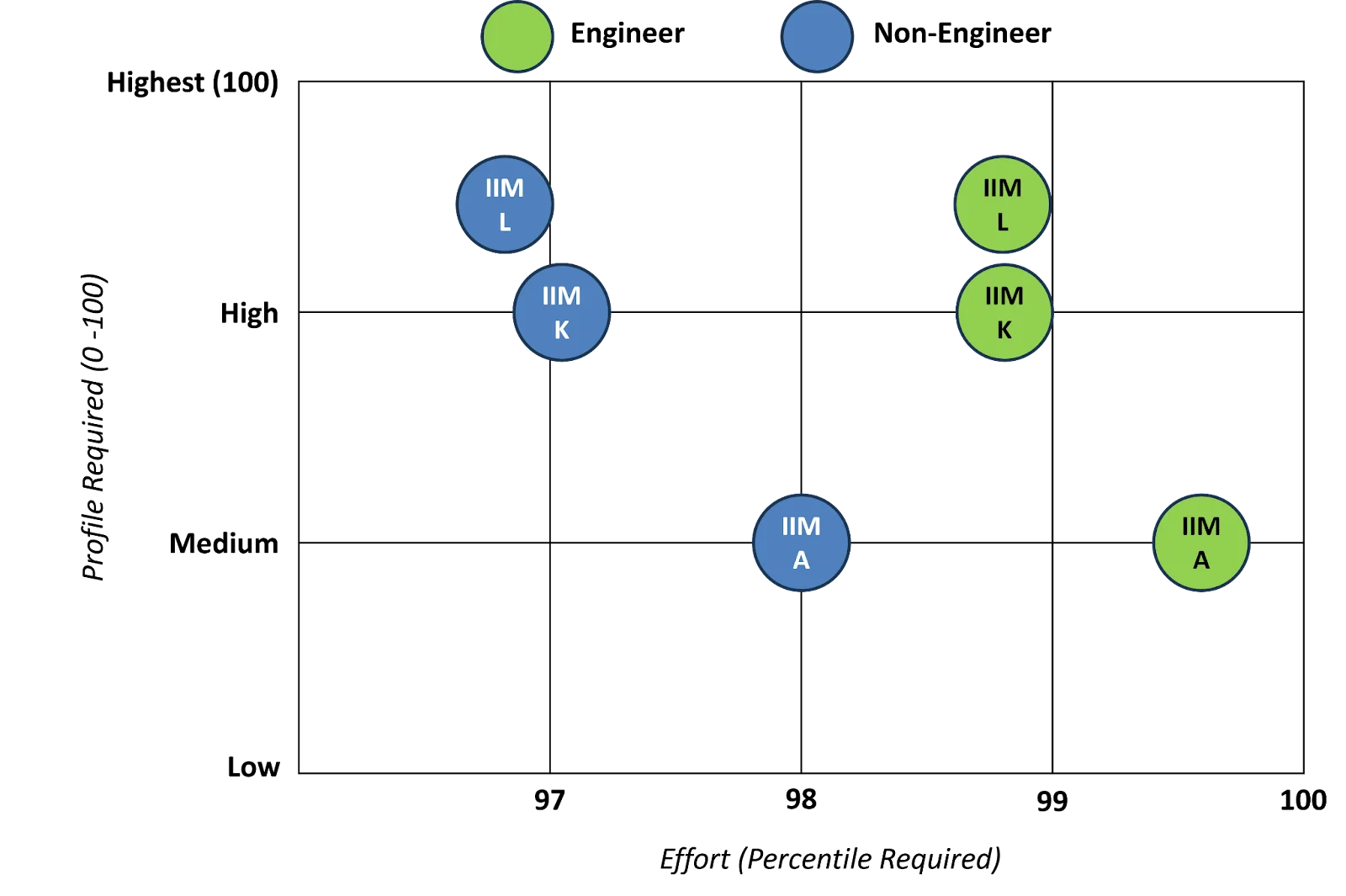
B-school Cutoffs for Humanities and Commerce Students
The CAT cutoffs for non-engineers are slightly different owing to various factors including diversity points awarded during the admission rounds in top B-schools.
In CAT 2022, IIM Calcutta Admissions:
- A Non-Engineering Candidate needed 14 marks less in comparison to an Engineering Candidate.
- The difference between the selection percentile between the two groups was 7 %ile.
In CAT 2022, IIM Indore Admissions:
- A Non-Engineering Candidate needed 14 marks less in comparison to an Engineering Candidate.
- The difference between the selection percentile between the two groups was 8 %ile.
NOTE:
- The percentiles mentioned above do not represent the cutoffs for the respective colleges; instead, they indicate the lowest percentiles achieved by Career Launcher students for final admission to those colleges.
- Percentiles are liable to change as per the number of applicants in that particular year, this is indicative data


